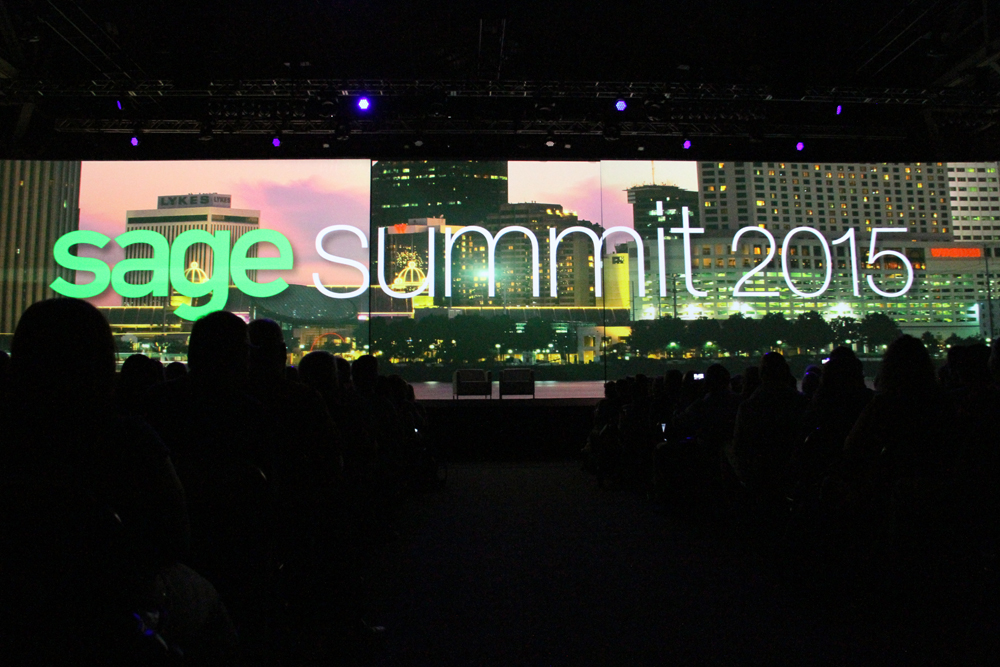
For Stephen Kelly, chief executive of Sage, breaking from the past has been key since he stepped into the job nine months ago.
Long-established in Newcastle, and listed on the London Stock Exchange, the accountancy software vendor has a reputation for conservatism, bound to an old industry whose habits are slow to change.
"One of the complaints I’ve heard about them for a long time is that they were letting the world pass them by," said Clive Longbottom, service director at research firm Quocirca.
Because so many British and other European accountants have stuck with Sage, he argued, many of the accountants’ customers have done likewise. The company was not necessarily liked, but rather seen as necessary.
So after 34 years in business, why is Kelly changing things?
Expense, Regret, Pay
What with software vendors trying to sell you CRM (customer relationship management), SFA (sales force automation) and HCM (human capital management), it is easy to be buried beneath the flood of acronyms when buying commercial IT.
Perhaps it was with this in mind that Kelly, speaking at the keynote of Sage Summit on Tuesday, gleefully repudiated ERP, suggesting that enterprise resource planning packages equated to "Expense", "Regret", and "Pain".
As such the three letters will be dropped from future Sage outings, in defiance of what Kelly termed "a well-padded meal ticket for the big five" software firms.
A marketing gimmick? "It is to a certain extent," confirmed Longbottom. But he also noted for many larger companies the term has become redundant, since you have to have some element of resource planning as part of your IT.
Indeed some would argue that integrating different pieces of kit under the ERP banner is something that many enterprise IT customers are interested in.
Jeremy Roche, chief executive of FinancialForce, a Sage rival, noted ahead of the conference that the Newcastle firm’s conversion to the cloud could be seen in this light.
"Sage’s shift to the cloud is a reflection of the market landscape and a critical move on their part to keep up with the rise of native cloud applications," he told CBR, adding his own company’s experience indicated "the market is demanding a cloud platform unifying ERP and CRM."
A pact with Benioff
As well as sharing a market FinancialForce and Sage share a cloud platform, namely Salesforce1.
Sage’s decision to push their Sage Live accounting software onto Salesforce after a few hectic months of creation was a surprise for many, the deal being prominently backed by Salesforce chief executive Marc Benioff.
Alan Pelz-Sharpe, an analyst at 451 Research, only recently told CBR: "Short-term it’s a great deal. In the long-term I’m not so sure."
When asked whether there was any chance that Salesforce could later move into Sage’s territory on the accounting or bookkeeping side, Kelly dismissed it.
"What they do well is customer sales and data success," he said. "I think both companies can be hugely successful, but I think to create what we have built in terms of accountancy, regulation, payments involves a lot of barriers to entry."
However for Longbottom Sage might well have to branch out if it wants to retain competitiveness in the crowded software market.
"If Sage can create a proper financials engine and create the proper processes around that then that’s how they will be successful," he said.
New World
Whatever one makes of Sage, there is an undoubted sense of energy about the company.
Speaking to CBR, Lee Perkins, managing director of UK&I at Sage, notes that the pace of the firm has quickened, and a sense of "ambition" is forefront of the company’s mind.
"I remember when I joined Sage [four years ago] people said: ‘Why are you doing that?’" he said, adding that the new drive of the firm is seen as a plus for its staff.
The speed, as Kelly said, comes with the pressures of the cloud.
"When I was back at Oracle when I set up a business it took 2 to 3 years to do," he said. "Now we can go into geographies in months."
Moving faster, updating products and fixing a less than stellar record in support (by Kelly’s own admission) will now take up much of the chief executive’s time. How customers respond remains to be seen.






